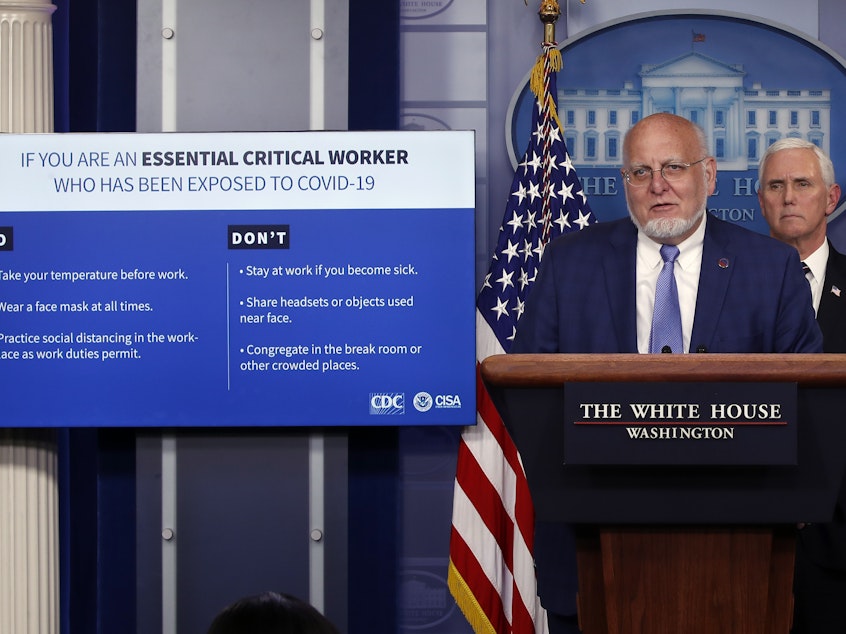White House Announces New Guidance For How Critical Employees Can Return To Work

The federal government has released new guidelines for when people in critical infrastructure roles can return to work after being exposed to a confirmed or suspected case of coronavirus.
The guidance pertains to essential critical workers who have been exposed to COVID-19. For those individuals, the guidelines advise:
Take your temperature before work.
Wear a face mask at all times.
Practice social distancing in the workplace as work duties permit
The guidelines advise individuals not to:
Stay at work if you become sick.
Share headsets or other items used near one's face.
Congregate in the break room, lunchroom, or other crowded places.
Employers are asked to:
Take the employee's temperature and assess their symptoms before the employee starts back at work.
If the employee becomes sick during the day, they should be sent home immediately.
Increase the air exchange in the building.
Increase the cleaning of commonly touched surfaces.
Test the use of face masks to ensure they don't interfere with workflow.
The new guidelines were announced at the White House on Wednesday. The guidelines are part of the government's effort to "re-open" the country, which has been brought to an economic halt due to the coronavirus and the extensive measures introduced to stem its spread. President Trump said Wednesday that he believes the country can re-open "soon" and he'll consult with health experts in determining exactly when.
The CDC defines a potential exposure as "being a household contact or having close contact within 6 feet of an individual with confirmed or suspected COVID-19. The timeframe for having contact with an individual includes the period of time of 48 hours before the individual became symptomatic."
The new guidance apply only to workers in critical infrastructure jobs. That category has been defined by the Cybersecurity and Infrastructure Security Agency (part of the Department of Homeland Security), but only as an advisory list, not a federal standard.
By CISA's reckoning, the category includes certain workers in healthcare and public health, law enforcement and first responders, food and agriculture, energy, water and wastewater, transportation, public works, critical manufacturing, financial services, communications, among other sectors.
The new guidance does not pertain to health care workers, for which the CDC had already issued guidelines.
The previously available guidance to businesses and employers in general is geared toward preventing workplace exposures to COVID-19 in non-healthcare settings. That guidance suggests employers take steps including implementing flexible sick leave policies, preparing for a situation where a lot of employees can't work due to illness or care-giving, and establishing social distance policies.
"What the CDC has done is that we've really looked at the essential work force, and how to maintain that work force, particularly at this time as we begin to get ready to re-open, and have confidence in bringing our work forces back to work," said CDC Director Dr. Robert Redfield.
Redfield said the new guidelines are for workers in critical roles who "have been within six feet of a confirmed case or a suspected case," so that they can go back to work under certain circumstances.
The goal of the guidelines, he said, is to "really begin to get these workers back into the critical workforce so that we won't have worker shortage in these critical industries." [Copyright 2020 NPR]

